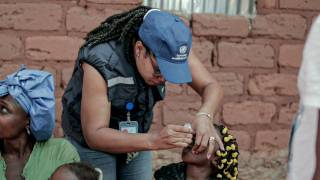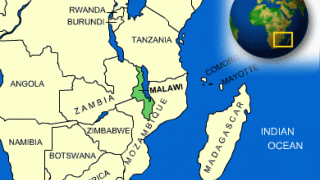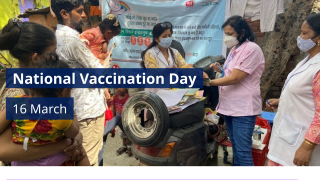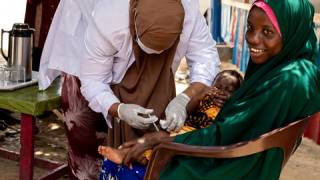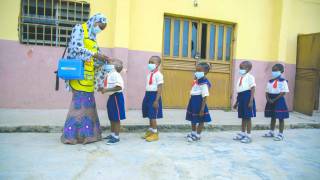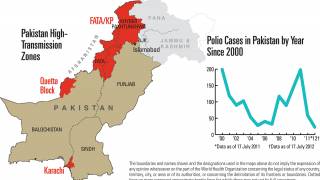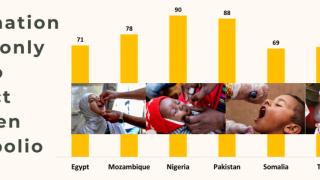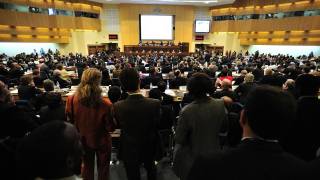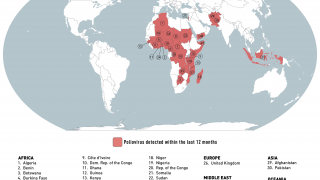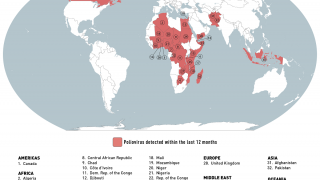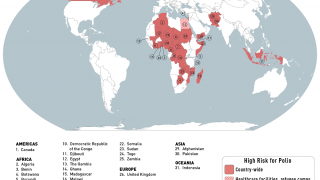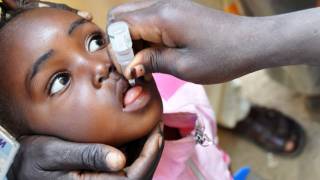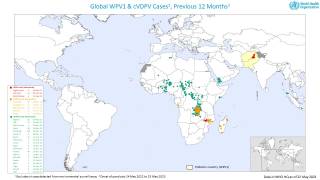Polio Eradication is a Global Challenge

Global leaders and stakeholders recently gathered at the World Health Assembly, where Ministers of Health evaluated the unique opportunity to eradicate the remaining chains of endemic wild poliovirus.
As of May 26, 2023, a handful of districts of just two countries, Pakistan and Afghanistan, continue reporting polio outbreaks.
For example, there have been three confirmed polio cases in Afghanistan's Nangarhar province in 2023.
H.E. Dr. Hanan Mohammad Al-Kuwari, Minister of Public Health of Qatar and Co-Chair of the WHO Eastern Mediterranean Regional Subcommittee for Polio Eradication and Outbreaks, commented in a media release on May 25, 2023, "In our Region, we have made significant progress in both containing the spread of wild poliovirus and closing outbreaks of vaccine variant polio."
"Afghanistan and Pakistan have restricted the virus to the smallest geographical footprint in history and are now doubling efforts to interrupt the remaining transmission fully."
The engines fueling this progress are manifold, but the two most powerful, which I truly believe will get us across the line, are improved immunity and better surveillance."
"We are reaching and vaccinating more children, more often, and we are using the most sensitive and robust surveillance measures in history to ensure that if the virus is there, we are not missing it."
According to the U.S. CDC, poliovirus transmission is primarily detected through case-based syndromic surveillance for acute flaccid paralysis (AFP) in persons, with confirmation of poliovirus by testing stool specimens.
In 2022, AFP surveillance was reviewed in 34 countries at high risk for poliovirus spread.
Because of the high proportion of asymptomatic infections, environmental surveillance (ES), the systematic sampling and testing of sewage for poliovirus, can supplement AFP surveillance to detect poliovirus transmission.
The total number of ES samples collected in countries with poliovirus transmission increased from 8,945 samples from 36 countries in 2021 to 12,259 samples from 40 countries in 2022.
The detection of cVDPV transmission in regions where poliovirus transmission has long been eliminated (e.g., genetically linked cVDPV2 in Canada, Israel, the U.K., and the U.S.) together with the importation of WPV1 genetically related to a Pakistan strain into southeastern Africa, underscore the threat of continued global poliovirus spread to any area, given international travel, says the U.S. CDC.
Both the WHO and CDC confirm polio is a vaccine-preventable disease, and various vaccines have been significantly adopted.
From January 2021–March 31, 2023, the Global Polio Eradication Initiative supported 48 countries with different polio vaccines: approximately 988 million bOPV, 616,000 IPV, 960,000 fractional IPV, 90 million mOPV2, 595 million nOPV2, and 100 million tOPV doses.
The CDC says progress toward polio eradication requires a continued international commitment to strengthening routine immunization and implementing preventive bOPV vaccinations, with or without IPV, in areas with chronically low regular immunization coverage.
In the U.S., IPV-containing vaccines have been offered since 2000.
Our Trust Standards: Medical Advisory Committee






